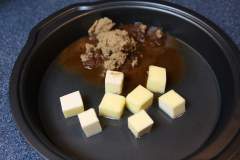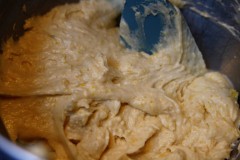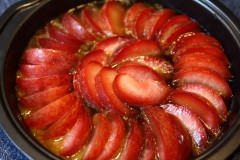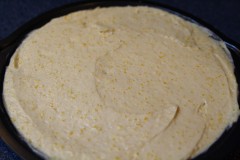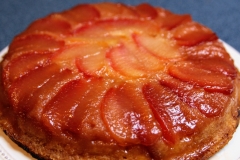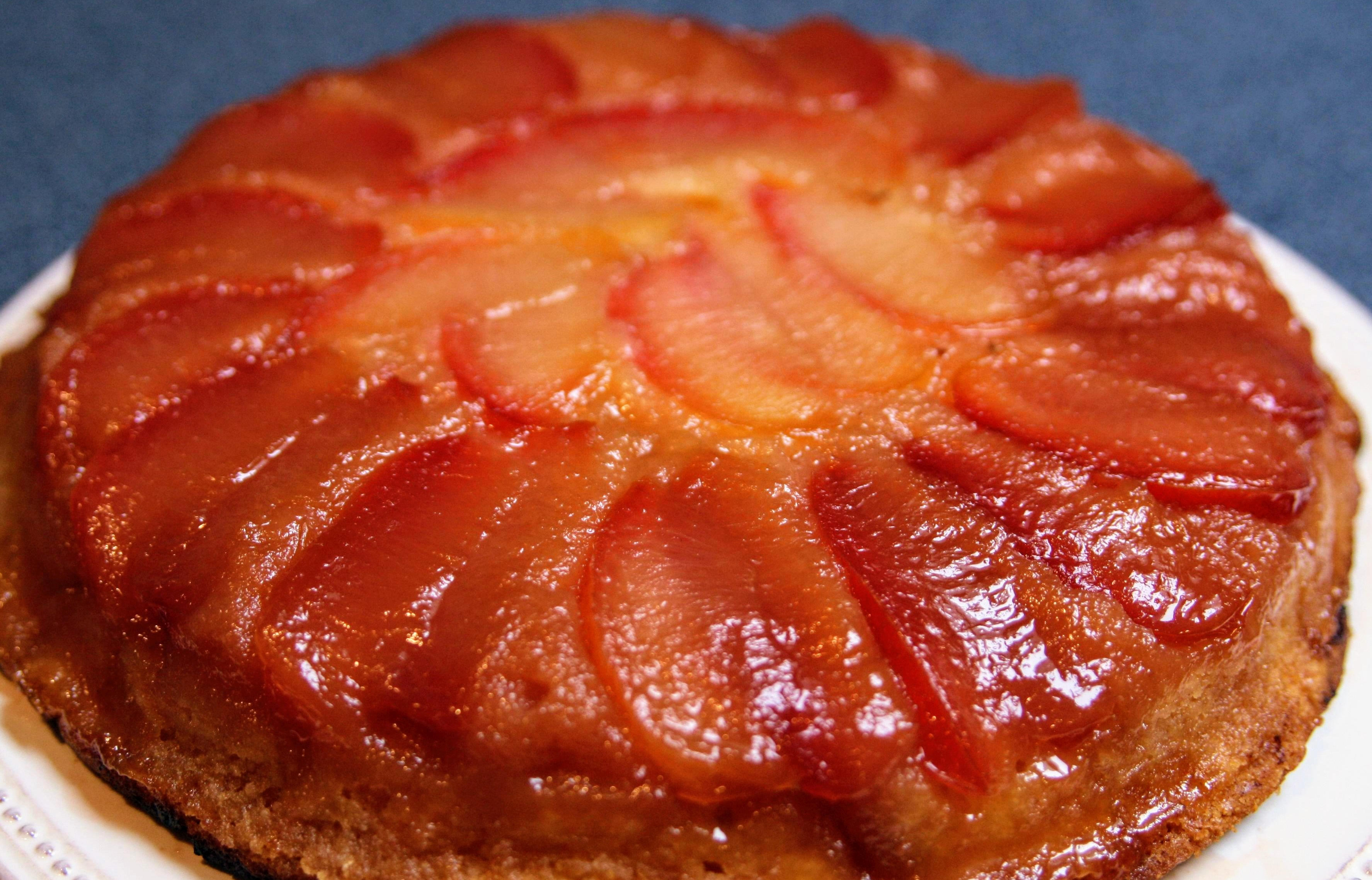
Pluot Polenta Upside Down Cake

This is a versatile cake recipe that works well with whatever fruit is in season. The sweet/tart combination of the pluots is especially good in this cake, but cranberries, blueberries, or blackberries would all be delicious. I would use as much fruit as is needed to cover the bottom of the pan. With berries, I’ve found that to be about 12 oz of fruit. This cake can also be used with cornmeal instead of polenta. I really like the texture the polenta adds, but it is still delicious with regular cornmeal. This cake works best in a non-stick cake pan, but any cake pan or oven-safe skillet will work.
After melting the butter, brown sugar, and lemon juice together in the cake pan, I’ve found it helpful to allow the butter mixture to cool before adding the batter. When the butter is hot, it becomes displaced by the addition of the batter and you end up with a bit of a mess. It may seem counter intuitive to chill the thing you’ve just warmed up, but I’ve found it makes the whole process easier. The butter doesn’t need to be fully solidified again, it just needs to not be piping hot. By the time I’ve mixed the batter and sliced my fruit, the butter has usually cooled enough to use without issue.
Pluot Polenta Upside Down Cake
Top:
2 oz unsalted butter
½ cup (115g) brown sugar
¼ cup lemon juice
3 medium sized pluots, sliced thin
Cake:
1 ¼ cup (175g) All Purpose Flour
¼ cup (50g) Polenta (or cornmeal)
1 ½ tsp baking powder
¼ tsp salt
½ cup (4 oz) unsalted butter, softened
¾ cup sugar (150g) sugar
Zest from 1 lemon
2 eggs
1 tsp vanilla
½ cup milk, 2% or whole
Preheat the oven to 350°. Zest one lemon and set aside. In an 8 or 9-inch cake pan, combine the butter, brown sugar, and lemon juice (don’t add the fruit yet). Put the pan in the warming oven until the butter and sugar have melted, checking every couple minutes or so and stirring as needed. Once the butter has melted and all of the brown sugar has dissolved, pull the pan out of the oven. Transfer the cake pan to the refrigerator and chill until the butter has cooled (see note).
Combine the flour, polenta, baking powder, and salt in a bowl and set aside. In the bowl of a stand mixer, cream together the butter, sugar, and lemon zest on high until the mixture is light and fluffy. Scrape down the sides of the bowl with a rubber spatula. Adjust the mixer speed down to medium. Add the eggs one a time, letting it become fully incorporated into the dough before adding the next. Once both eggs have been fully emulsified, add the vanilla. If necessary, scrape down the sides of the bowl. Reduce the mixer’s speed to low, and gradually add in half of the dry ingredients, mixing until it’s just barely combined. Add the milk, mix until its incorporated, then add the rest of the dry ingredients. Mix until it is just barely combined. Remove the bowl from the stand mixer, and scrape down the sides of the bowl with the rubber spatula and fold in any bits of flour that remain. Make sure you’ve scraped down to the bottom and mixed in any parts of the batter that weren’t fully incorporated.
Arrange the fruit in the bottom of the cake pan and scoop the batter on top. Gently spread the batter out using a rubber or offset spatula, until it is even and flat.
Place a foil-lined baking sheet on the lowest oven rack. Bake the cake at 350° for 40-50 minutes on the middle oven rack, until a butter knife inserted into the middle of the cake comes out clean. If batter or crumbs cling to it, continue baking in several minute increments until the inserted knife comes out clean. If you have to test your cake more than once, make sure you’re cleaning the knife off in-between each test.
If you used a non-stick pan, let the cake cool for about 10 minutes before inverting. For all other pans, you’ll want to invert right away so that the sugar on the bottom doesn’t harden and forever cement your cake to the pan. Carefully run a butter knife along the edge of the pan to gently separate the cake from the side of the pan. Set your serving plate upside down on top of the cake. Using hot pads, carefully flip the cake, so that the plate is sitting right side up with the cake pan on top of it. Gently tap the plate and cake pan on the counter to help loosen the cake. Then, gently lift the pan up so that the cake is left sitting on the plate. If any fruit has stuck to the bottom of the pan, carefully reposition it onto the cake, keeping in mind that it’s going to be very hot.
Give the cake some time to cool before slicing. It is delicious warm and at room temperature.
